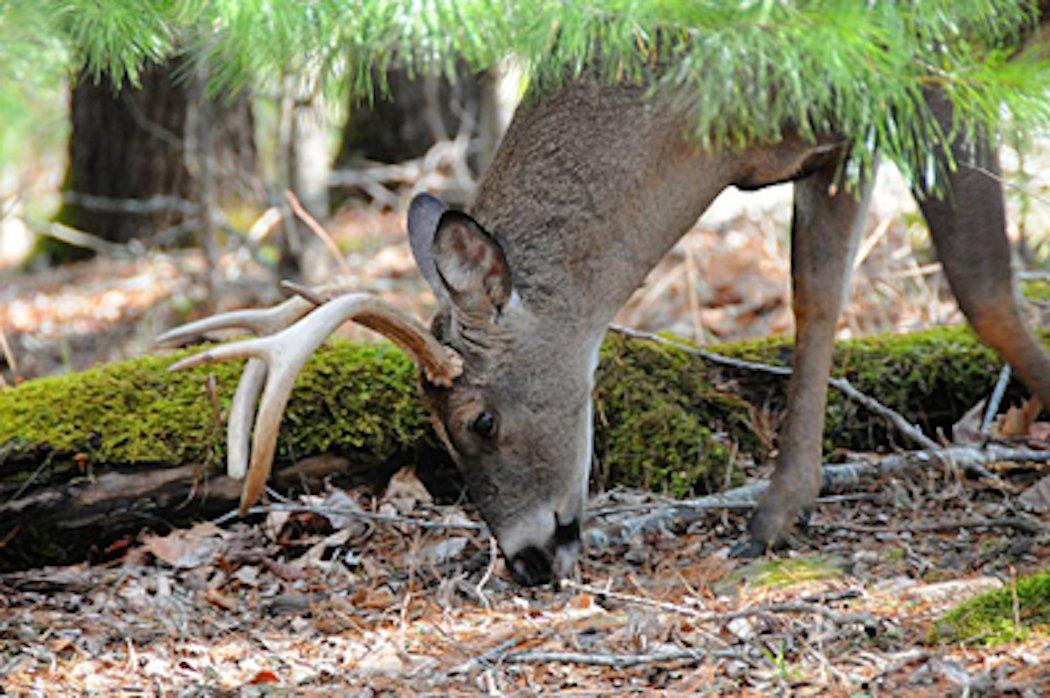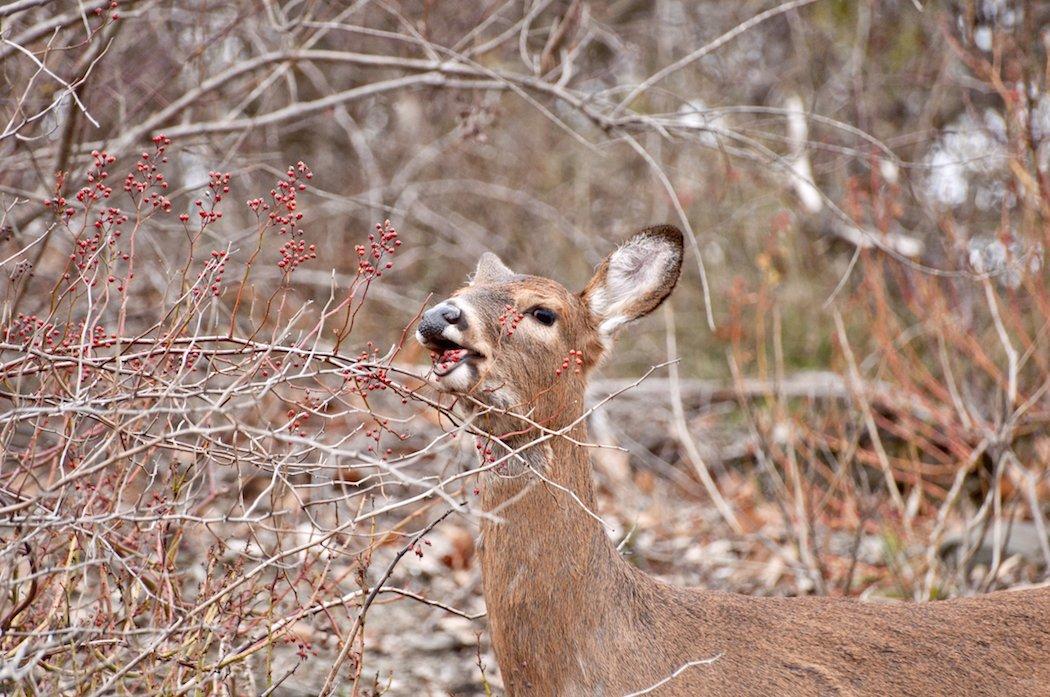Have You Ever Attempted to Do This?
For many years hunters and outdoor enthusiasts have planted food plots to improve the nutrition available to their deer herd and increase their chances of harvesting a quality buck. While this is a good practice, food plots typically represent only 1 to 5 percent of the available habitat on most hunting properties. What about the other 95 to 99 percent? Clearly, food plots are only one piece of a total management program. The purpose of this article is to introduce you to a relatively new management concept — total vegetation management. This program involves managing native vegetation and supplementing these forages with planted food plots during critical periods of the year.
According to Mississippi State University's wildlife department, The white-tailed deer is a herbivore and is characterized as a browser. It is also a ruminant (four-chambered stomach), which helps with the digestion of various foods, making it versatile in its feeding habits. It consumes a variety of leaves, twigs, bark, and buds of trees and shrubs, plus hard and soft fruits, vines, forbs, lichens, mushrooms, cultivated crops, and some grasses. The majority of the above food items are native plants available throughout much of the year. However, most hunters and managers pay little attention to native vegetation or ignore it all together.
Don't Miss: Annuals vs. Perennials for Food Plots
Whitetails' food preferences change considerably throughout the year in response to their changing nutritional requirements. There are three key periods of the year that should be considered when attempting to maximize the availability of native forage to white-tailed deer. These include spring, when deer are trying to recover from the stress of winter and the rut; summer, when antler growth occurs, does are lactating, and newborn fawns are growing; and fall/winter when deer are preparing for winter and the rut. The whitetail's diet is significantly different during each of these periods. Therefore, by managing the native vegetation on your property during these periods and implementing good herd management practices, like those suggested by the QDMA, you can significantly increase your chances of producing healthy deer and quality bucks.
Spring Management Techniques
During early spring when whitetails are recovering from the stress of winter and weight loss due to the rut, they need a diet high in protein to help regain lost weight. Luckily, this is also the time of the year when Mother Nature provides us with first green up — when plants start putting on new growth. This new growth is readily available in most areas, highly preferred, and, if managed properly, can be highly nutritious with crude protein levels exceeding 16 percent.
Don't Miss: The 10 Commandments of Food Plots
Fertilizing woodlands and patches of native vegetation is an effective but underused method of attracting deer, said Dr. Lee Stribling of Auburn University. Fertilizing with Scotts' new 36-3-7, time-release Native Plant Fertilizer can increase nutritional content and production of native plants like Honeysuckle. This is possible because the nitrogen contained in the fertilizer has been coated with a proprietary time-release coating enabling the nitrogen to be gradually released to the plant over several months. The recommended application schedule is one application in the early spring followed by another in late summer. For those who like a more hands-on approach, they can make light, periodic applications of a complete fertilizer every 45 to 60 days from spring through late summer. Be sure to perform an annual soil test and lime and fertilize accordingly.
Dr. Stribling goes on to say that these natural food plots become excellent areas to hunt during the early fall because, Deer are attracted to these natural food plots by the improved nutrition and taste of fertilized plants.
Southern Native Plants and Preference Levels
- Non-native Japanese honeysuckle (high preference)
- Blackberry, raspberry (high preference)
- Greenbrier (high preference)
- Strawberry bush (high preference)
- Wild grapes (medium to high preference)
- Common persimmon (high preference)
- Ashes (high preference)
- Southern Crabapple (high preference)
- Oaks (high preference)
- Hollies (medium to high preference)
Fertilizing mast producing trees and shrubs during the spring is often overlooked by hunters because they are not utilized by wildlife until late summer or early fall. However, spring is the best time to start a tree fertilization program. To make fertilizer application easier and more effective, Scotts has developed Tree Tablets or compressed fertilizer discs that are inserted into the soil around the perimeter of the tree's root zone at a rate of four tablets per 1 inch of tree trunk diameter. Like their other fertilizers, these tablets are also timed-release so they provide gradual fertilization for up to two years with a single application.
Don't Miss: 10 Trees That Will Hold Deer on Your Hunting Property
Summer Food Plots

Summer Food Plot Options
- Soybeans (plant April to June)
- Cowpeas (plant April to June)
- American Jointvetch (plant March to June)
- Rape (plant April to July)
- Lablab (plant April to June)
- Corn (plant March to May)
- Millet (plant April to July)
- Grain Sorghum (plant May to June)
There are many options in addition to those listed above that can be used to provide nutrition to your deer herd during the stressful summer months. Late summer is also the time to make additional applications of fertilizer to native plants. This will ensure these plants grow well and provide good nutrition well into early fall.
Don't Miss: 18 Trees Whitetails Need and How to Identify Them
Fall Food Plots

When deciding what to plant for your fall food plots, it is generally best to plant a mixture of cereal grains and legumes or forage plants introduced by Evolved Harvest. This will provide nutritious forage during the winter, spring and early summer. Scotts suggests using a single application of their 28-10-10 Time-Release Food Plot Fertilizer for these plantings. This eliminates the need to make multiple fertilizer applications and saves time, effort and money.
The most important thing to remember when instituting a total vegetation management program is to manage your native vegetation and food plots to meet the nutritional needs of your deer herd. Native vegetation provides the nutritional basis for your deer herd but food plots are generally required to maintain optimum nutrition during the critical stress periods of late summer and winter. A total vegetation management program coupled with good harvest management practices will ensure a healthy deer herd and greatly improve your chances of harvesting that buck of a lifetime.
Editor's Note: This was originally published April 30, 2009.
Don't Miss: Why Native Plants Are Vital to Deer Hunting
Are you a hunter wanting to learn how to accomplish your goals? Check out our stories, videos and hard-hitting how-to's on food plots and land management.








